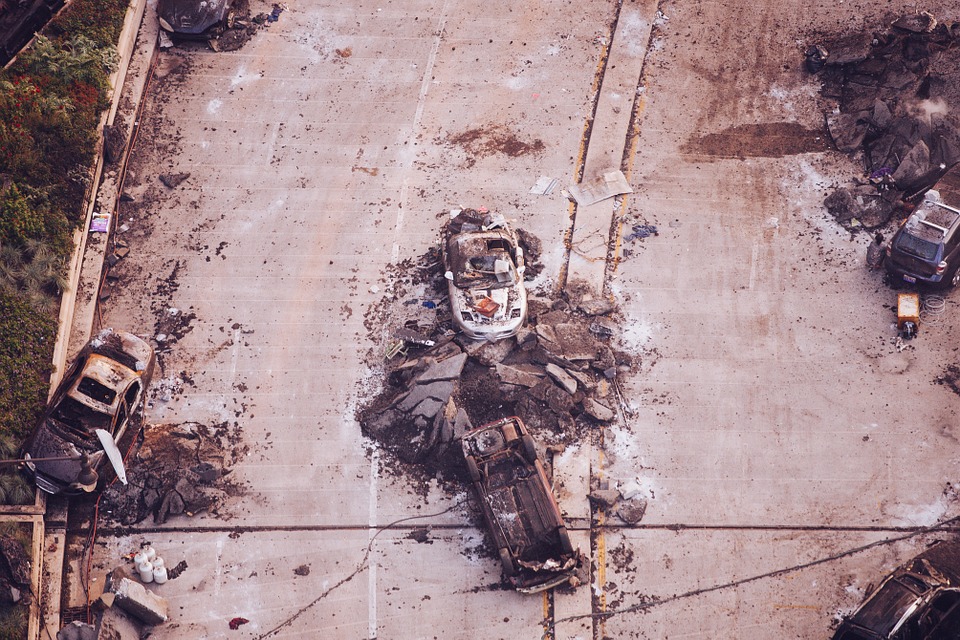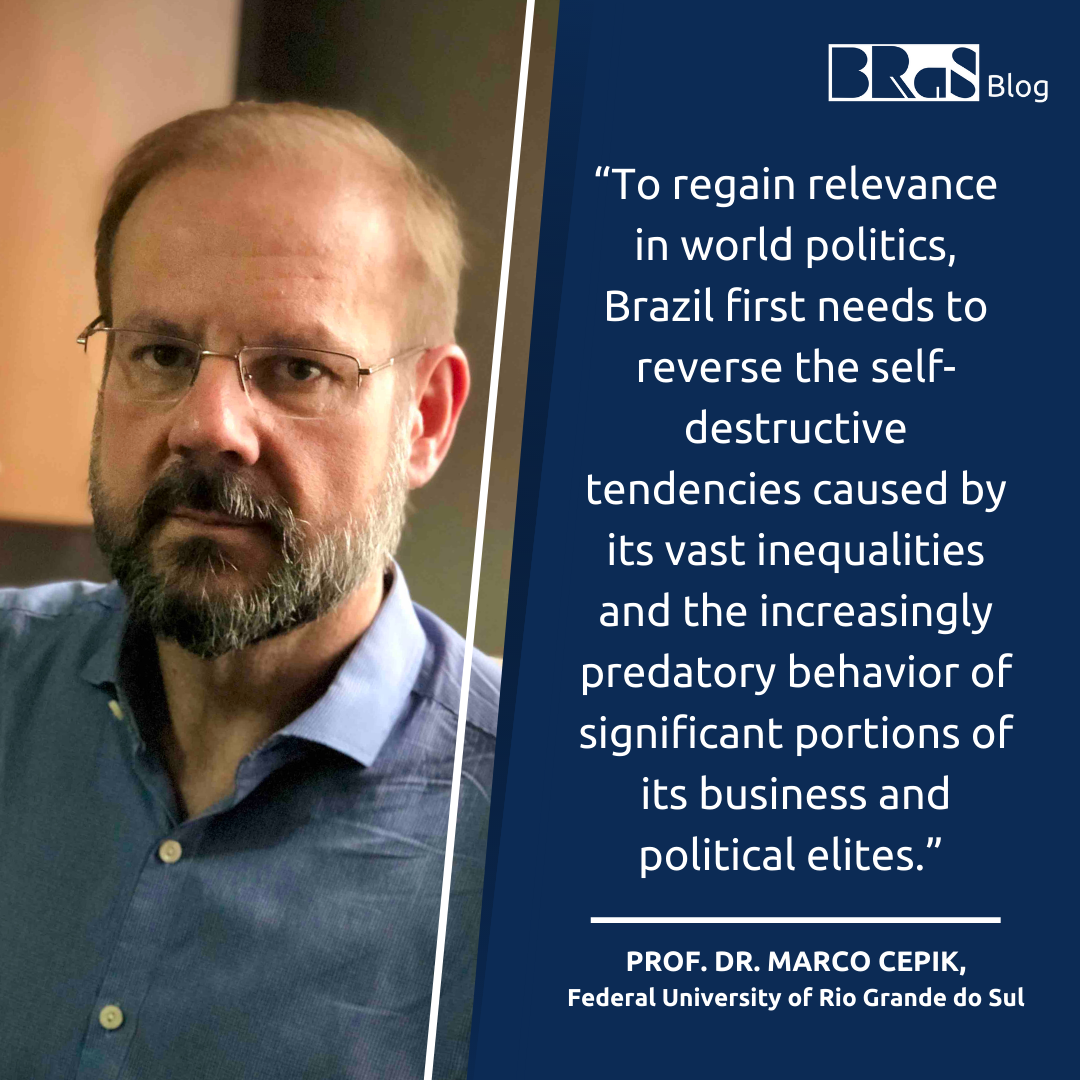by Luiza Correa de Magalhães Dutra* and Tamires de Oliveira Garcia**
Edited and reviewed by Anna Paula Bennech and Giovanna Imbernon
Discussing Brazilian police is not always comfortable, especially keeping in mind its disquieting particularities. However, a necessary dive into this subject could be elucidative. Criminological and sociological analyses in Brazil reveal that the public security field has appeared as a necessary discussion more and more since the 1990s, as the debate of crime containment and public security institutions got more attention from society.
Deeper into the containment of crime and violence, it is worth looking into the Public Security institutions. Research in the area of state violence demonstrates a fragile and worrying image about police and other Public Security institutions in Brazil (Adorno & Dias, 2014; Kant de Lima, 2014; Costa & Lima, 2014; Muniz & Junior, 2014). Furthermore, an extensive national bibliography has been focusing on the way these institutions operate, the intersections with different social markers, and the legitimacy of their acts, demonstrating alleged brutality by those corporations (Lima, Bueno & Sinhoretto, 2015; Muniz & Paes-Machado, 2010; Muniz, 1999; Muniz & Silva, 2010).
Historically, as a way to better respond to crime, police institutions have sought to increase the use of force to expand their prerogatives, including detaining and registering citizens. Nevertheless, a fundamental question concerns their target: who are those people watched and targeted as “criminals,” and how, in this context, is policing done? Accordingly, this essay aims to briefly discuss policing in Brazil, supported by quantitative data and the literature, using the Jacarezinho massacre – the worst in Brazilian history so far – as a case study.
Police Brutality in Brazil and the social difference: race, class, and gender
Let us start by focusing on police brutality in Brazil, especially on the social markers of difference. As a field of analysis, social markers – or social markers of differences – seek to give visibility to the actions of certain groups’ inclusion and exclusion in different social contexts.
Quantitative data from Brazilian surveys demonstrate the unsettling picture of the convergence of police violence and social markers of difference. According to the “Brazilian Yearbook on Public Security (2020)“[1], in 2019, the number of deaths from police interventions was 6,357. Compared to the US, in Brazil, police kill much more: a collaborative survey by The Guardian shows that there were 1,093 civilian deaths in 2019 in the US – about 3 lives a day. The difference between the countries is enormous and shows how the police in Brazil act: brutaly.
This fact becomes even more evident if we analyze the profile of people killed by the police: the aforementioned yearbook showed that 79.1% of victims of police interventions were black; 74.3% were young people up to 29 years old, and 99.2% were men.
Particularly in favelas, the interaction between police and community may become constant combat, in which the use of force and brutality is barely distinguishable. Those conflicts create different examples of excessive police use of force against the civilian population, for example, during anti-crime operations in major cities and against those regarded as criminals.
The case of Jacarezinho: suspicion, police action, and the death of “those who can be killed”
On May 6, 2021, in the community of Jacarezinho, north of the municipality of Rio de Janeiro, after a meeting between governor Cláudio Castro and President Jair Bolsonaro, the civil police undertook a police raid “to curb the enticement of minors into drug trafficking in the region.” The case became known as the “Jacarezinho Massacre” and left nearly 30 people dead.
This episode is another case in which the police’s version is not the same as that of the locals, including what appears in police reports. The media had access to some records of the murders committed by the police and the justifications pointed out. In some of them, there is a disparity between the version of the investigation document and that of the victims’ relatives (Barbon, Queirolo & Nogueira, 2021).
It is possible to say that there were search and seizure warrants in the operation that were used to justify the deaths that occurred in the alleged confrontation. However, no measure legitimizes the dimension shown by the facts. The images disseminated by the media showed a devastating scenario in Jacarezinho. Survivors explained that as soon as the gunshots started to be heard, people tried to protect themselves and their children as best as they could. After that, however, the operation in the streets took over the houses: injured people asking for shelter, as the police officers without a court order broke into their dwellings, executing and completing what they had started in the street (Gortázer, 2021).
This situation demonstrates that the police intervention went beyond compliance with legal measures in what was justified as reasonable in “necessary operations against the war on drugs.” After a police officer was one of the first victims of the action, police brutality in the community exposes the character of revenge contained in this so-called revenge operation.
From the records released, at least 26 people affected by the raid arrived lifeless at different hospitals in Rio de Janeiro. In addition, the medical reports revealed details at the Evandro Freire Hospital, on Ilha do Governador, with injuries that indicated “torn faces,” “lacerations,” injuries to the lower limbs, compatible with firearm shots, and “deviations bones in the upper limbs,” characteristics of deaths that escape the idea of proportionality even for the defense of life itself.
Ultimately we can say that: a) it seems that the police acted disproportionately and violently in Jacarezinho; b) there was a profile of the people executed in the raid that is very close to the profile explained above (young, poor, and black); c) the social markers of difference create a criminal profile that, in practice, may and should be fought, no matter how it is done. Therefore, the deaths would always have some justification.
To sum it up
Based on this discussion, some points are worth highlighting: a) Jacarezinho is not an isolated case in Brazil; police officers normally work with violence directed at a very specific group that they claim to be the “criminals“; b) usually, this kind of case does not end with a real investigation of the police operation, creating some sort of legitimacy to act in the same way in another situation; c) police violence is a snake eating its own tail; in other words, police violence creates a violence circle, full of fear and anger.
This massacre is not a “one-off action” or an isolated case, but the reality of how policing creates an environment of combat, conflict, and unsafety – not only for the civilians but also for the officers themselves. The Jacarezinho case is an example that there is no right to life and the presumption of innocence for a specific part of Brazilian society. Many times, police kill before that.
[1] https://forumseguranca.org.br/wp-content/uploads/2021/02/infografico-2020-final-100221.pdf
References
Adorno, S. & Dias, C. 2014. Monopólio Estatal da Violência. In: Lima, R. S.; Ratton, J. L.; Azevedo, R. G. (Orgs.). Crime, Polícia e Justiça no Brasil (187-197). São Paulo, SP: Contexto.
Barbon, J., Queirolo, G. & Nogueira, I. (2021, May 12). Saiba quem são e como morreram as 28 vítimas do Jacarezinho. Folha de S. Paulo. Recuperado em jul. 05, 2021, em https://www1.folha.uol.com.br/cotidiano/2021/05/saiba-quem-sao-e-como-morreram-as-28-vitimas-do-jacarezinho.shtml.
Coelho, H. & Barreira, G. (2021, May 14) Jacarezinho: saiba quem são, onde morreram e o que dizem famílias e polícia sobre os 27 mortos. G1, Recuperado em jul. 07, 2021, em: https://g1.globo.com/rj/rio-de-janeiro/noticia/2021/05/14/jacarezinho-saiba-quem-sao-onde-morreram-e-o-que-dizem-familias-e-policia-sobre-os-27-mortos.ghtml.
Costa, A. T. M. & Lima, R. S. de. 2014. Segurança Pública. In: Lima, R. S. & Ratton, J. L. & Azevedo, R. G. (Orgs.). Crime, Polícia e Justiça no Brasil (482-490). São Paulo, SP: Contexto.
Gortázer, N. G. (2021, May 13). “Não vai embora, vão me matar!”: a radiografia da operação que terminou em chacina no Jacarezinho. El País. Recuperado em jul. 07, 2021, em https://brasil.elpais.com/brasil/2021-05-13/nao-vai-embora-vao-me-matar-a-radiografia-da-operacao-que-terminou-em-chacina-no-jacarezinho.html.
Kant de Lima, R. 2014. Éticas e Práticas na Segurança Pública e na Justiça Criminal. In: Lima, R. S. & Ratton, J. L.& Azevedo, R. G. (Orgs.). Crime, Polícia e Justiça no Brasil. (471-481) São Paulo, SP: Contexto.
Lima, R. S., Bueno, S. & Sinhoretto, J. 2015. A gestão da vida e da segurança pública no Brasil. Soc. estado., 30(1), 123-144.
Muniz, J. & Júnior, D. P. 2014. Mandato Policial. In: Lima, R. S. & Ratton, J. L. & Azevedo, R. G. (Orgs.). Crime, Polícia e Justiça no Brasil (491-501). São Paulo, SP: Contexto.
Muniz, J. 1999. Ser policial é, sobretudo, uma razão de ser. Cultura e cotidiano da Polícia Militar do Estado do Rio de Janeiro. Tese de Doutorado, Iuperj, Rio de Janeiro, RJ, Brasil.
Muniz, J. & Paes-Machado, E. 2010. Polícia para quem precisa de polícia: contribuições aos estudos sobre policiamento. Cad. CRH, 23(60), 437-447.
Muniz, J. & Silva, W. F. 2010. Mandato policial na prática: tomando decisões nas ruas de João Pessoa. Cad. CRH, 23(60), 449-473.
* Luiza Correa de Magalhães Dutra: Master’s Degree in Criminal Sciences (PUCRS). Specialization in Public Security, Citizenship and Diversity (UFRGS). Graduated in Law (PUCRS) and Social Sciences (UFRGS). Adjunct Coordinator of the Brazilian Institute of Criminal Sciences (IBCCRIM). E-mail: luiza.dutra15@gmail.com.
** Tamires de Oliveira Garcia: Doctoral Student in Criminal Sciences (PUCRS). Master in Law (Unilasalle). Graduated in Law (PUCRS). Volunteer at the NGO Somos – Communication, Health and Sexuality.








